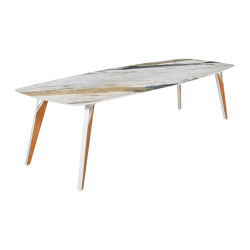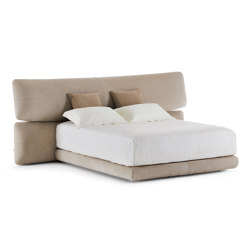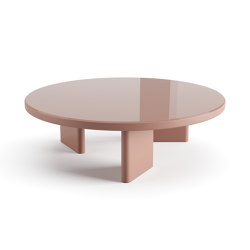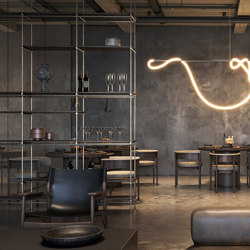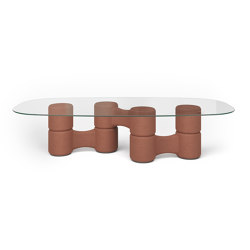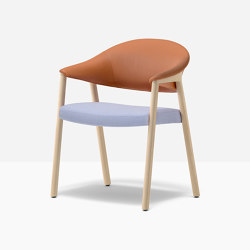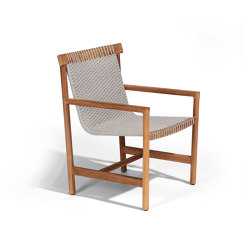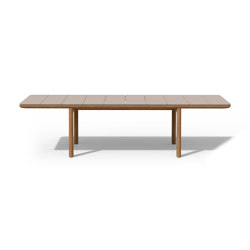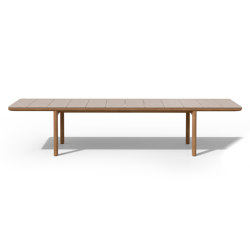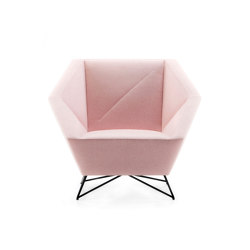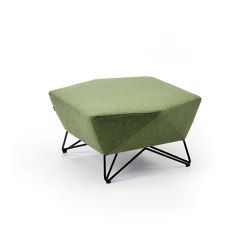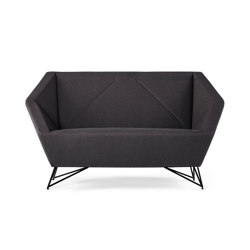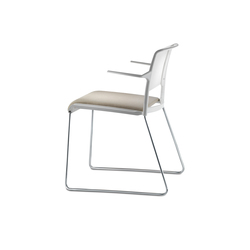Informazioni su Pilat & Pilat
MAGGIORI INFORMAZIONI SU PILAT & PILAT
OWN MANUFACTURING PLANT IN BOSNIA
All furniture and wooden home accessories from Pilat & Pilat are produced at Nordent. They have their own manufacturing plant in Bosnia, employing some 40 craftspeople on a full-time basis. Pilat & Pilat like to buy their wood privately from small-scale operators. For many generations, orchards have been a sustainable source of income for the elderly in the woody regions of Bosnia. On average, families have about two hectares of woodland with dozens of fruit trees, such as walnut and cherry trees. After many years of harvesting the fruits, the trees are finally given the chop. Three trees will get a family, often consisting of three generations, comfortably through winter. The younger generation always takes care of new plantings and the maintenance of the orchard. A personal hallmark
of care and dedication is automatically passed on to the growing wood from one generation to the next. From family orchard to Famylje Collection. A sustainable and sensible process.
SUSTAINABLE WOOD SELECTION
The solid wooden furniture of the Famylje Collection revolves around five types of wood: oak, walnut, maple, elm and cherry. The unique character of the tree is retained in each piece of furniture. In terms of appearance, no two pieces of the same type of furniture are exactly identical, because of a different shade, for instance. For the Famylje Collection, a furniture maker will endeavour to create the best possible balance by choosing the right wood. A customer with special requirements with regard to the preferred furniture wood is advised to first talk to his dealer. In many cases, it would be desirable to match the appearance of new furniture to the customer's preference. Colour and structure are variables for the customer to choose from. The furniture maker will do his best to meet the customer's choice. However, this may result in an ex tra charge. As was pointed out, the procedure of purchasing wood in Bosnia is quite different from the methods followed by Dutch furniture manufacturers, who buy their wood from wholesalers. We buy a certain quality of wood as required, at a price to match. Pilat&Pilat and Nordent take responsibility for the environment by using the large pieces of high-quality wood for making furniture. Smaller pieces, left over after selecting and manufacturing furniture, are used for the production of home accessories. Any remaining wood is used for heating the dry kilns and the furniture plant. In this process, native trees from wooded Bosnia are being used in a sustainable manner.
TAILORED TO SUIT INDIVIDUAL REQUIREMENTS
The furniture quality is continuously monitored during the entire production process. Each piece of furniture is custom-made of the type of wood chosen by the customer. Please contact us for a price of nonstandard items. Also for alternative bonding of tabletops and details. Customers may also come up with their own design together with a clear working plan.
properties solid wood
The solid wooden furniture of the Pilat&Pilat Famylje Collection revolves around five types of wood; oak, walnut, maple, elm and cherry. The unique character of the tree is retained in each piece of furniture. That is the reason why no two pieces of furniture are exactly identical, but will differ in things like colour shade. Timber is selected and processed by experienced furniture makers in our own factory in Bosnia. The furniture quality is continuously monitored during the entire production process. Each piece of furniture is custom-made of the type of wood chosen by the customer. The wood is finished using natural oil or special furniture soap. Wood is a product of nature, and for that reason the colour and structure are not always identical. In spite of the treatment, the colour of the
wood may change through putting it in direct sunlight or in artificial light. Wood has an open structure. As a result, exposure to humidity in the air may have an effect on the furniture. Changes may occur at any time. Particularly during winter months when heaters are turned on full power, the air may become too dry for the wood. To minimise the risk of shrinking wood, we suggest a healthy indoor climate with a room temperature of approx. 20 degrees Celsius and a relative air humidity of around 55% - 65%. Dry air may cause minute cracks in the wood, which will close again as the humidity level goes up. Wood is a high-grade material that needs to be treated with care. Sharp, hot or wet objects may damage the wooden surface. Spilt liquids should be removed immediately to prevent stains. The use of caustic - and certainly abrasive - cleaning agents is not recommended. Avoid stains by using coasters for your drinks and removing any spills without delay. Small do-it-yourself repairs The advantage of unpainted and not artificially coloured solid furniture is to have the routine maintenance and small repairs in your own hands. Permanent and serious stains, such as traces of regular touching or rubber shoes on table legs, can be removed using fine (220-grit) sandpaper. Make sure you sand lengthwise in the direction of the wood grain. This will remove the film of oil or soap that had been put on for protection. Remember to re-apply the surface protection after treatment. A deep scratch or dent may be repaired through sanding or swelling (briefly pressing a hot iron onto a moist cloth on the damaged spot). In that way it will be a breeze to repair small damage to your furniture without expert knowledge.
woods and finish
In general natural soap and/or oil are used for standard finishing solid wooden furniture. Each model can be made in five types of wood. Further options for wood finishes are a lacquer finish, transparent or non-transparent, in combination with a woodstain, if so required. The sample materials make it easy to choose from naturel soap and/or oil treatment. Natural soap and/or oil are used for standard finishing solid wooden furniture. The natural character of the wood is preserved in this way. The maintenance of furniture treated with soap and/or oil essential to keep your furniture in good condition, but also simple. (see maintenance on pag. 110) By giving the furniture regularly soap- or oil treatments remains in good condition. Particularly in the winter-time this is very important.
lacquer Finish
As well as treatment using oil and soap, Pilat&Pilat can offer a lacquer finish for their furniture. Transparent lacquer is combined with wood stain, if so required. Oak can have a spray-painted coat using coloured lacquer, while retaining the visible structure of the wood. Options do not only include the standard colours, but also a lacquer in just about any RAL or Sikkens colour. Lacquer seals the wood from the ambient air, so that fluctuations in air humidity will hardly have an effect of the wood. Lacquered wood also has practical benefits: stains will not penetrate into the wood and furniture cleaning is a breeze. Lacquered furniture feels different from furniture treated with oil or soap. Lacquered furniture takes away the user's touch of wood. Any scratches are harder to fix. Furniture treated with oil or soap can be fixed without leaving any marks, but lacquered furniture may often require sanding and repainting. A lacquered finish will also incur an extra charge.
Cured wood
The Process During the so-called ‘curing’ process, the wood storage area is fired up to reach a temperature of between 200 and 240 °C. This is done to reduce the moisture content of the wood and to change the structure of the wood to make it almost insensitive to shrinkage and expansion. In addition, the wood is given a fine, characteristic, dark-brown colour. All that makes the cured wood a fantastic ecological alternative to tropical wood. The wood discolours as a whole, so the colour will remain the same in case of small scratches or damages. This is a great advantage compared with colour finishing applied to the wood afterwards. In the course of time the ‘dark’ colour may somewhat fade, particularly after the furniture has been treated with soap and is exposed to bright sunlight. The product is finished with oil and/or soap. The thickness of the cured wood is between 10 and 20 mm. Cured wooden parts thicker than 20 mm are made up of several layers of wood. The wood discolours as a whole, so the colour will remain the same in case of small scratches or damages. This is a great advantage compared with colour finishing applied to the wood afterwards.
Smoked oak
During the smoking process, ammonia reacts with the tannin naturally found in oak. This leaves the oak with a distinct smoky colour. The smoking process will not entirely penetrate the wood; the reaction stops at about 1.5 mm below the wood surface. The process depends on matters such as the concentration of tannin in the wood, dilution of the ammonia, as well as the length of time for the reaction. As time goes by, the smoky colour will slightly fade and the wood will regain its natural colour. Oak is the only type of wood suitable for smoking.
OWN MANUFACTURING PLANT IN BOSNIA
All furniture and wooden home accessories from Pilat & Pilat are produced at Nordent. They have their own manufacturing plant in Bosnia, employing some 40 craftspeople on a full-time basis. Pilat & Pilat like to buy their wood privately from small-scale operators. For many generations, orchards have been a sustainable source of income for the elderly in the woody regions of Bosnia. On average, families have about two hectares of woodland with dozens of fruit trees, such as walnut and cherry trees. After many years of harvesting the fruits, the trees are finally given the chop. Three trees will get a family, often consisting of three generations, comfortably through winter. The younger generation always takes care of new plantings and the maintenance of the orchard. A personal hallmark
of care and dedication is automatically passed on to the growing wood from one generation to the next. From family orchard to Famylje Collection. A sustainable and sensible process.
SUSTAINABLE WOOD SELECTION
The solid wooden furniture of the Famylje Collection revolves around five types of wood: oak, walnut, maple, elm and cherry. The unique character of the tree is retained in each piece of furniture. In terms of appearance, no two pieces of the same type of furniture are exactly identical, because of a different shade, for instance. For the Famylje Collection, a furniture maker will endeavour to create the best possible balance by choosing the right wood. A customer with special requirements with regard to the preferred furniture wood is advised to first talk to his dealer. In many cases, it would be desirable to match the appearance of new furniture to the customer's preference. Colour and structure are variables for the customer to choose from. The furniture maker will do his best to meet the customer's choice. However, this may result in an ex tra charge. As was pointed out, the procedure of purchasing wood in Bosnia is quite different from the methods followed by Dutch furniture manufacturers, who buy their wood from wholesalers. We buy a certain quality of wood as required, at a price to match. Pilat&Pilat and Nordent take responsibility for the environment by using the large pieces of high-quality wood for making furniture. Smaller pieces, left over after selecting and manufacturing furniture, are used for the production of home accessories. Any remaining wood is used for heating the dry kilns and the furniture plant. In this process, native trees from wooded Bosnia are being used in a sustainable manner.
TAILORED TO SUIT INDIVIDUAL REQUIREMENTS
The furniture quality is continuously monitored during the entire production process. Each piece of furniture is custom-made of the type of wood chosen by the customer. Please contact us for a price of nonstandard items. Also for alternative bonding of tabletops and details. Customers may also come up with their own design together with a clear working plan.
properties solid wood
The solid wooden furniture of the Pilat&Pilat Famylje Collection revolves around five types of wood; oak, walnut, maple, elm and cherry. The unique character of the tree is retained in each piece of furniture. That is the reason why no two pieces of furniture are exactly identical, but will differ in things like colour shade. Timber is selected and processed by experienced furniture makers in our own factory in Bosnia. The furniture quality is continuously monitored during the entire production process. Each piece of furniture is custom-made of the type of wood chosen by the customer. The wood is finished using natural oil or special furniture soap. Wood is a product of nature, and for that reason the colour and structure are not always identical. In spite of the treatment, the colour of the
wood may change through putting it in direct sunlight or in artificial light. Wood has an open structure. As a result, exposure to humidity in the air may have an effect on the furniture. Changes may occur at any time. Particularly during winter months when heaters are turned on full power, the air may become too dry for the wood. To minimise the risk of shrinking wood, we suggest a healthy indoor climate with a room temperature of approx. 20 degrees Celsius and a relative air humidity of around 55% - 65%. Dry air may cause minute cracks in the wood, which will close again as the humidity level goes up. Wood is a high-grade material that needs to be treated with care. Sharp, hot or wet objects may damage the wooden surface. Spilt liquids should be removed immediately to prevent stains. The use of caustic - and certainly abrasive - cleaning agents is not recommended. Avoid stains by using coasters for your drinks and removing any spills without delay. Small do-it-yourself repairs The advantage of unpainted and not artificially coloured solid furniture is to have the routine maintenance and small repairs in your own hands. Permanent and serious stains, such as traces of regular touching or rubber shoes on table legs, can be removed using fine (220-grit) sandpaper. Make sure you sand lengthwise in the direction of the wood grain. This will remove the film of oil or soap that had been put on for protection. Remember to re-apply the surface protection after treatment. A deep scratch or dent may be repaired through sanding or swelling (briefly pressing a hot iron onto a moist cloth on the damaged spot). In that way it will be a breeze to repair small damage to your furniture without expert knowledge.
woods and finish
In general natural soap and/or oil are used for standard finishing solid wooden furniture. Each model can be made in five types of wood. Further options for wood finishes are a lacquer finish, transparent or non-transparent, in combination with a woodstain, if so required. The sample materials make it easy to choose from naturel soap and/or oil treatment. Natural soap and/or oil are used for standard finishing solid wooden furniture. The natural character of the wood is preserved in this way. The maintenance of furniture treated with soap and/or oil essential to keep your furniture in good condition, but also simple. (see maintenance on pag. 110) By giving the furniture regularly soap- or oil treatments remains in good condition. Particularly in the winter-time this is very important.
lacquer Finish
As well as treatment using oil and soap, Pilat&Pilat can offer a lacquer finish for their furniture. Transparent lacquer is combined with wood stain, if so required. Oak can have a spray-painted coat using coloured lacquer, while retaining the visible structure of the wood. Options do not only include the standard colours, but also a lacquer in just about any RAL or Sikkens colour. Lacquer seals the wood from the ambient air, so that fluctuations in air humidity will hardly have an effect of the wood. Lacquered wood also has practical benefits: stains will not penetrate into the wood and furniture cleaning is a breeze. Lacquered furniture feels different from furniture treated with oil or soap. Lacquered furniture takes away the user's touch of wood. Any scratches are harder to fix. Furniture treated with oil or soap can be fixed without leaving any marks, but lacquered furniture may often require sanding and repainting. A lacquered finish will also incur an extra charge.
Cured wood
The Process During the so-called ‘curing’ process, the wood storage area is fired up to reach a temperature of between 200 and 240 °C. This is done to reduce the moisture content of the wood and to change the structure of the wood to make it almost insensitive to shrinkage and expansion. In addition, the wood is given a fine, characteristic, dark-brown colour. All that makes the cured wood a fantastic ecological alternative to tropical wood. The wood discolours as a whole, so the colour will remain the same in case of small scratches or damages. This is a great advantage compared with colour finishing applied to the wood afterwards. In the course of time the ‘dark’ colour may somewhat fade, particularly after the furniture has been treated with soap and is exposed to bright sunlight. The product is finished with oil and/or soap. The thickness of the cured wood is between 10 and 20 mm. Cured wooden parts thicker than 20 mm are made up of several layers of wood. The wood discolours as a whole, so the colour will remain the same in case of small scratches or damages. This is a great advantage compared with colour finishing applied to the wood afterwards.
Smoked oak
During the smoking process, ammonia reacts with the tannin naturally found in oak. This leaves the oak with a distinct smoky colour. The smoking process will not entirely penetrate the wood; the reaction stops at about 1.5 mm below the wood surface. The process depends on matters such as the concentration of tannin in the wood, dilution of the ammonia, as well as the length of time for the reaction. As time goes by, the smoky colour will slightly fade and the wood will regain its natural colour. Oak is the only type of wood suitable for smoking.
MAGGIORI INFORMAZIONI SU PILAT & PILAT

